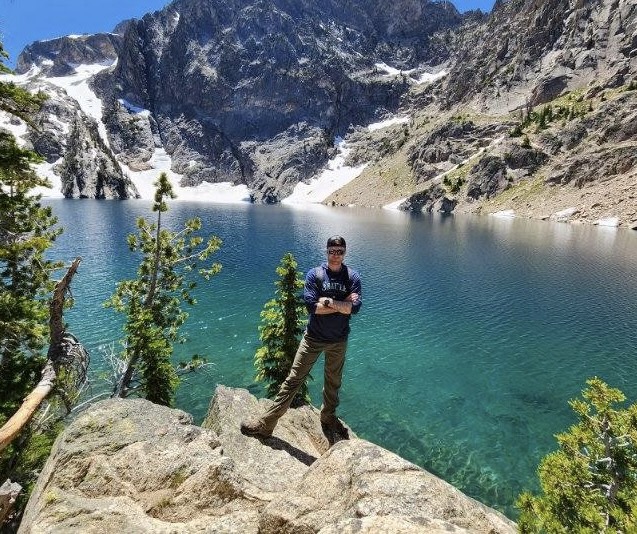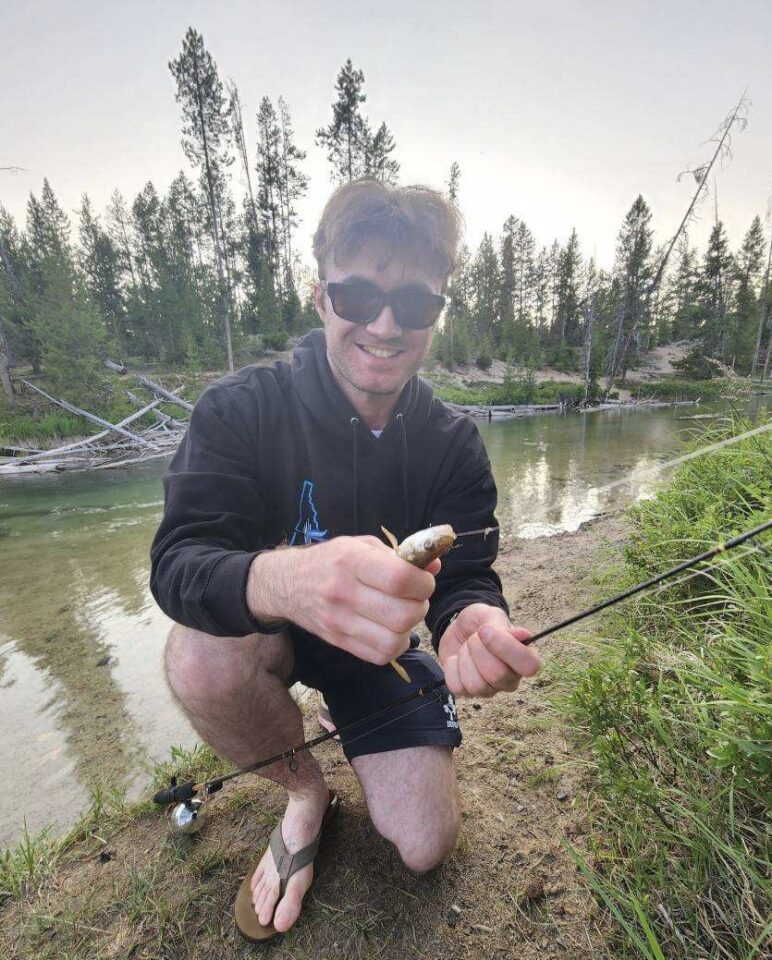
Photo Credit: SIHA staff
I’m of the view that people are, partially, a product of their place. Yes, the people in one’s life and one’s hobbies and such shape the individual, but think about how much that is influenced by location: the friends you made were here, not there; you may have gotten into a certain activity because you could do it where you grew up, and not somewhere else.
Location shaping who I am is something I can’t escape; my tinge of an Irish accent reveals to people that, clearly, a portion of my life was spent outside of the United States (enough so that “where are you from originally?” is often asked when my current living place doesn’t satisfy inquiry). This seems to overshadow to people that my life is just as influenced by where I have lived within the U.S.: Washington, Montana, and Idaho. More specifically, though, I find my life being further shaped by my time in the Sawtooths.

Photo Credit: SIHA staff
My stint in Montana was while I attended Montana State University in Bozeman for two-and-a-half years. Come the summer recess, I went back to Washington where my parents lived. Only being there for school, I never made much of an effort to acclimate to the place or to get to know it better; it took leaving Montana for me to fall in love with it, and now it has a strong homely feel to it when I visit. That feeling of a connection to the ground beneath my feet and the mountains around me–a sense of place–finally arrived, and has only grown as I learn more about its land and history. In fewer words, I greatly value that affinity with being in a certain place.
When I transferred to the University of Idaho in Moscow, I made an attempt to do what I had failed to do in Bozeman. This time, I engaged with the town and the university–-but a connection to Idaho as a state hadn’t yet been forged; then I came to Sawtooths.

Photo Credit: SIHA staff
The drive out to the Sawtooths was an experience in and of itself. My path took me through the Yakima Valley and by the Tri-Cities, both parts of Washington I had never seen; and through to the Northeastern part of Oregon, a state I had never been in. Having never been further south in Idaho than Moscow, I drove through the backroads of Gem County, slowly making my way towards the trees and mountains of the Boise National Forest, before finally crossing into the Sawtooths.
Instead of going to my parents for the summer, I am now spending my time actively working with the land and its history. I’ve been hiking its trails, and fishing its trout, and eating copious amounts of its pizza–Papa Brunees is truly the pride of Stanley! I’ve been getting to know the extraordinary and peculiarities of the past that made the Sawtooth country what it was, and the lengthy process of getting it to the conservation and recreation oriented place it is in. The point is, that by experiencing the state beyond the role of a student in a college town, I actually get to experience Idaho in all of its public glory. I regularly interact with folks from Boise, Coeur D’Alene, Hailey, Pocatello, as well as small communities, many that I hadn’t heard of, dotted around the state and elsewhere.
Beyond the sense of place that I now feel, I also have a much greater appreciation for the public lands in Idaho and the West, as well as a better understanding of how they operate. It’s not that I didn’t like public lands before, but getting to know the staff that work on it, and the political and cultural history that went into the creation of places like the Sawtooth NRA have given me a keen admiration of their beauty, inner-workings, and the fight to keep them public.
In my position as a Historic Specialist, I value being able to share with folks from Idaho and beyond the greatness of the SNRA. It’s one thing to be able to tell people where a hike is or where to do fishing; but if I can showcase my own experience, my own enjoyment of hiking to the Bench Lakes for gorgeous views of Heyburn Peak, or catching my first fish in Perkins Lake, then I have the opportunity to show visitors that personal, intimate connection to this place. Likewise, informing visitors about the advocacy of folks like Senator Frank Church, or of the wild west style of crime of the past–sharing what history interests me the most–allows me to be less like a walking informational display, and more like someone eager to share something real cool with a friend. They may not remember all of the information that I gave them; but if they remember that the guy telling them was excited about it, or if they remember the rhetorical tools I used to inform them (such as poor attempts at humor, or silly demonstrations), then I think I will have done a good job.
Eoin Gleeson is a 2025 SIHA Historic Specialist. When he isn’t working at the Stanley Museum, he enjoys fishing, going to Pap Brunees, and hiking with friends.